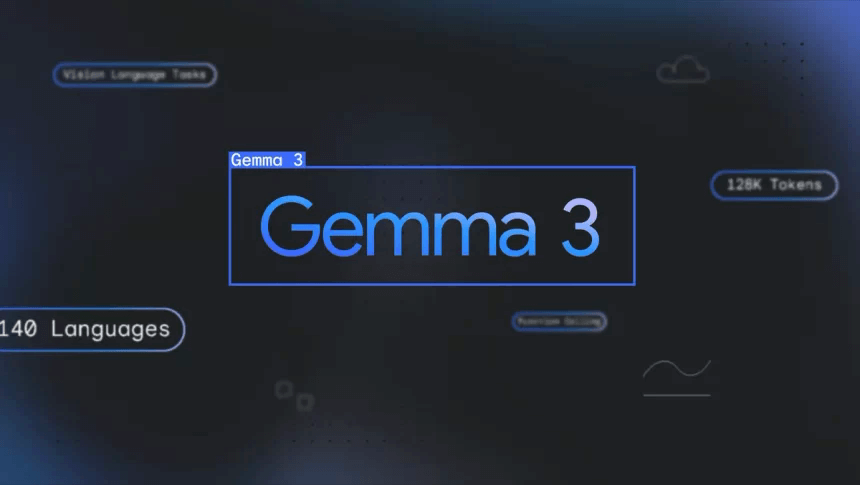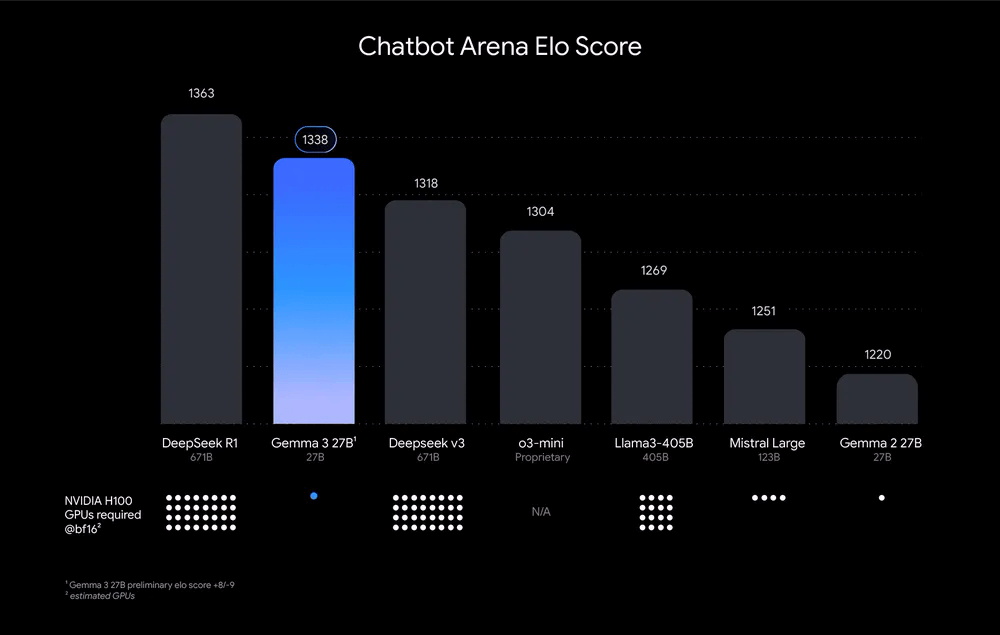
Google Gemma 3 is opening the doors to a new era in the AI world, standing out with both its technical innovations and accessibility. Designed for developers and tech enthusiasts, this model features multimodal (text, image, video) support, a wide context window, and open weights. So, what sets Gemma 3 apart from its competitors? In which areas does it make a difference? Here’s an in-depth look at Gemma 3.
Core Features and Innovations of Gemma 3
- Multimodal Capabilities: Gemma 3 can process text and image inputs, and analyze short videos. This enables high performance in complex tasks like visual question answering, OCR, and object counting.
- Wide Context Window: With a 128K token context window, long texts and multiple images can be processed at once. This means 16x more data compared to previous Gemma versions.
- 140+ Language Support: The model supports over 140 languages, making it ideal for global projects.
- Different Model Sizes: With 1B, 4B, 12B, and 27B parameter options, it can run on both mobile devices and powerful servers.
- Open and Flexible Usage: Model weights can be downloaded from platforms like Hugging Face and Kaggle; easy integration with services like Google AI Studio and Vertex AI.
Technical Depth: Architecture and Developer Ecosystem
Gemma 3 is built on Gemini 2.0 technology. Up to 14 trillion tokens of data were used for training, leveraging modern tools like JAX and ML Pathways. Training on TPUs provided high performance and scalability.
Highlights for developers:
- Quantization and Efficiency: Official quantized versions deliver high performance even on low-end hardware.
- Function Calling: Programmatic integration via natural language interfaces.
- Security: Advanced security layer with ShieldGemma 2, filtering harmful, sexual, or violent images.
- Community and Open Ecosystem: Over 160 million downloads and thousands of community contributions via Gemmaverse.
Benchmark Results and Comparisons
Gemma 3 achieves standout results compared to rivals like GPT-4o and Llama 3 in multimodal tasks. Especially in visual question answering, OCR, and object counting, it demonstrates high accuracy.

The image above shows the comparative performance of Gemma 3’s 27B model with other large language models based on Chatbot Arena ELO scores. Gemma 3 stands out as the most powerful open model that can run on a single GPU/TPU.
Real-World Applications and Test Results
Gemma 3 excels in the following tasks:
- Object Counting: Accurately counting objects in images.
- Visual Question Answering (VQA): Correct answers in tasks like movie scene recognition and reading prices from menus.
- OCR: Reading and accurately transferring text from images.
- Document Analysis: Extracting information from documents like invoices and receipts.
- Zero-Shot Object Detection: Determining coordinates of objects in images (limited success in some challenging tasks).
Security, Ethics, and Limitations
Gemma 3 adopts a rigorous approach to child safety, sensitive data filtering, and content quality in its training data. Harmful content is automatically filtered with ShieldGemma 2. However, the model is not fully open source and license restrictions require attention in some use cases.
Conclusion and Future Perspective
With its multimodal structure, broad language and context support, open ecosystem, and security measures, Google Gemma 3 is a strong option for next-gen AI projects. It’s a must-see for both individual developers and enterprises seeking an accessible, flexible, and high-performance solution.
